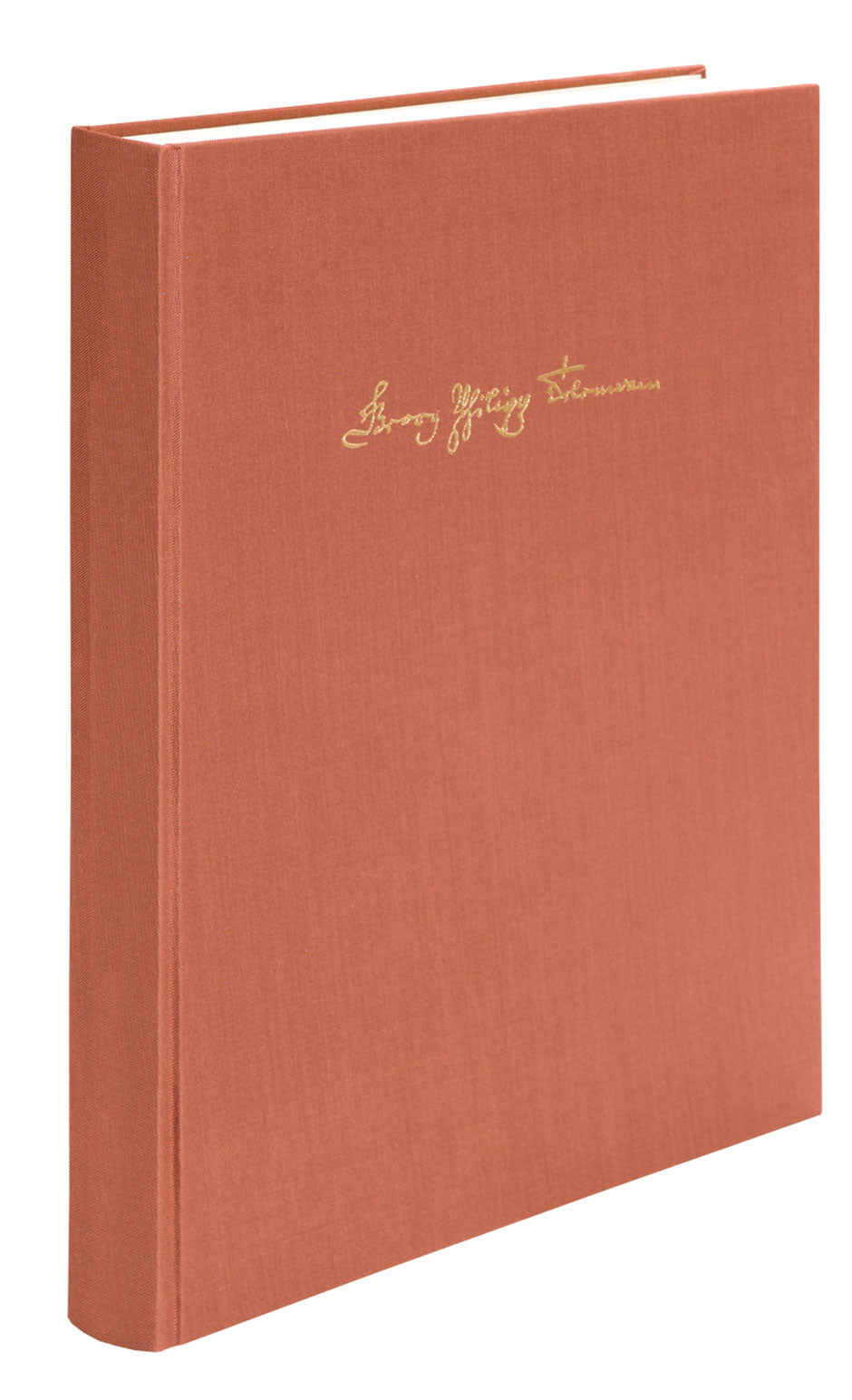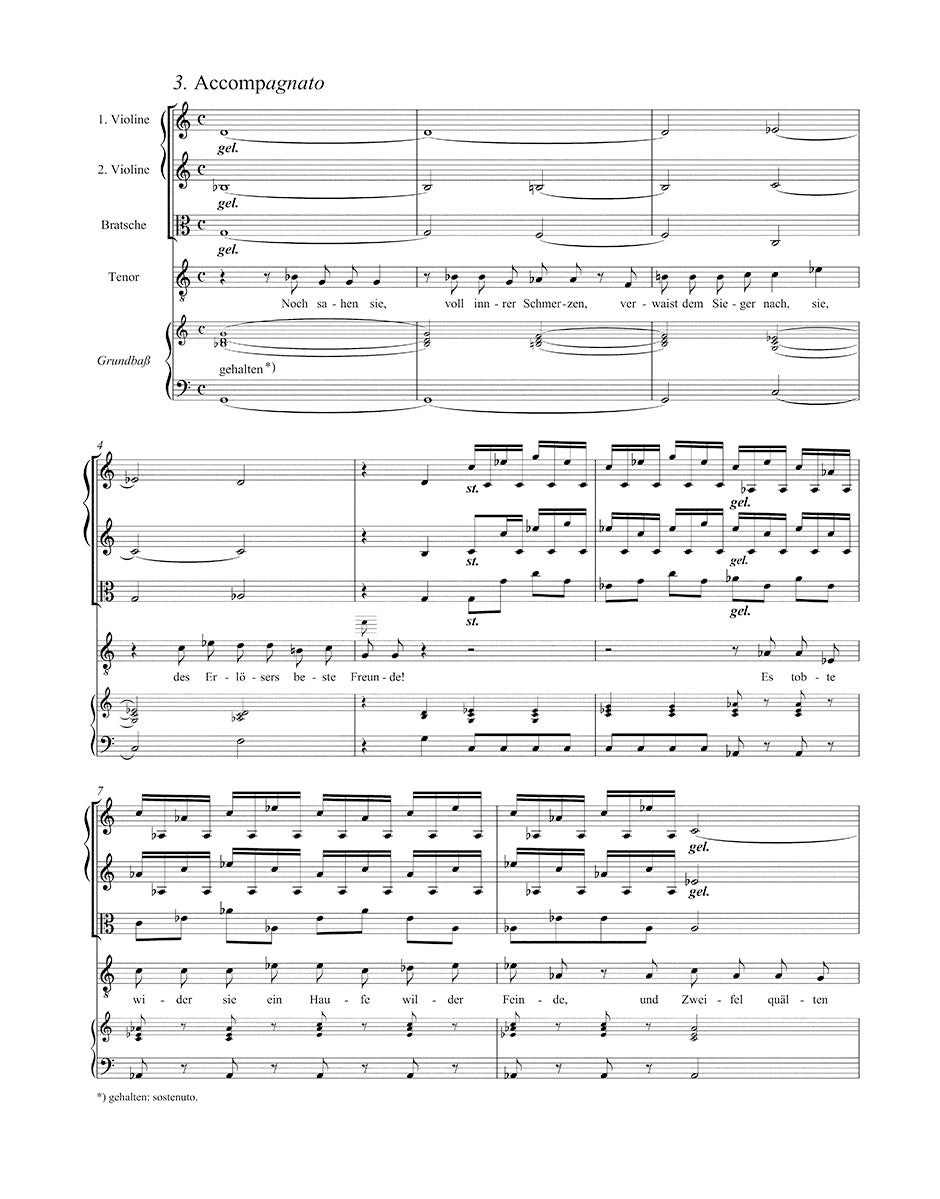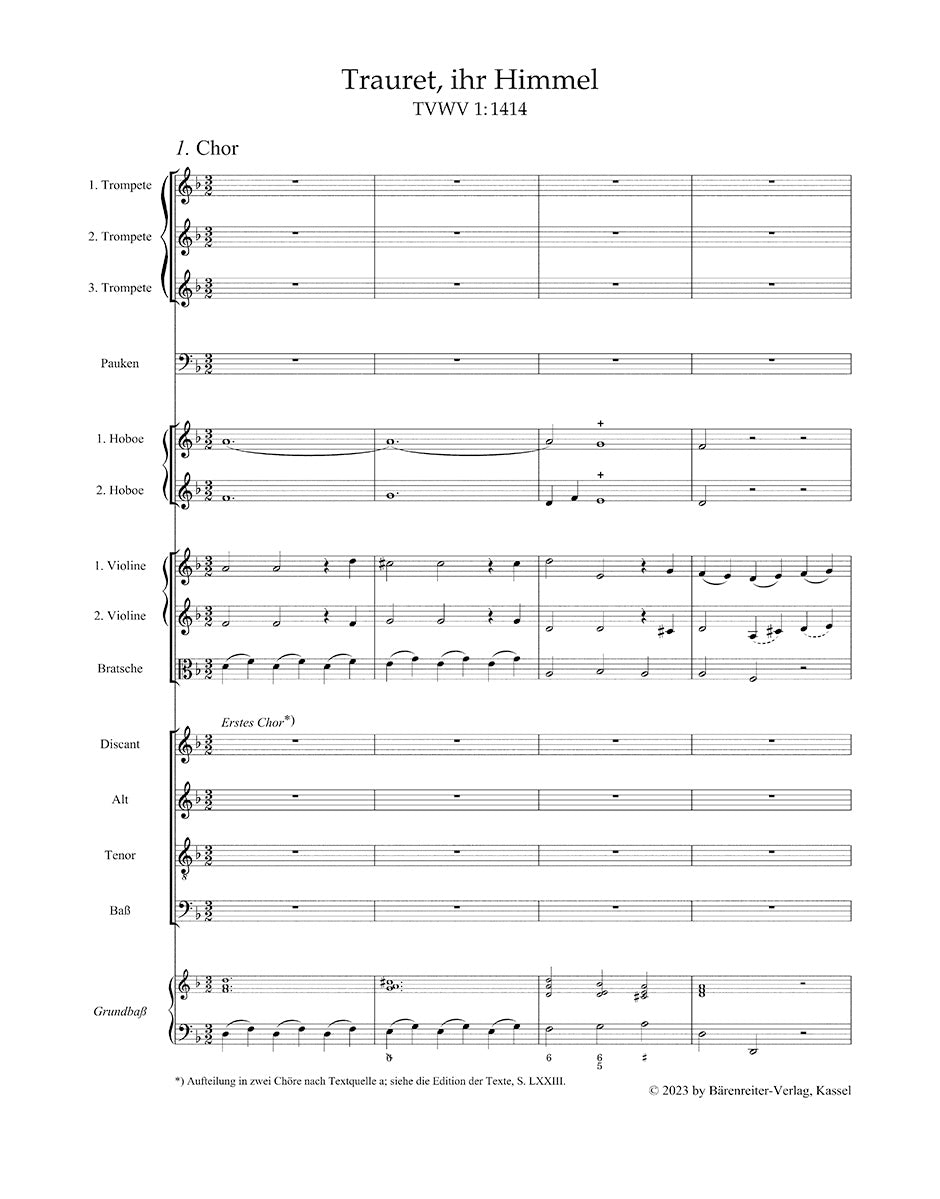Telemann: Sechs späte Kirchenmusiken
Musical Works 61
Expected to ship in about a week.
- Composer: Georg Philipp Telemann (1681-1767)
- Editor: Ralph-Jürgen Reipsch
- Format: Full Score
- Binding: Hardcover
- ISMN:
- Size: 10.2 x 13.0 inches
- Pages: 294
Description
For the first time, examples of church music from Telemann's late creative period, which arguably is marked above all by large-scale vocal works, have been edited and are presented in the "Telemann Complete Works", volume 61. Included are six compositions from the years 1759 to 1762 which were written for Ascension Day, the 1st day of Easter, the 1st day of Whitsuntide and Michaelmas, supplemented by the ode "Die Begnadigung", which was performed in 1762 on the 19th Sunday after Trinity as church music after the sermon. The melody of the ode and five of the six verses were printed in the journal ‘Unterhaltungen' in 1766.
The compositions presented in the volume do not follow a uniform formal scheme; each demonstrates a special form. Representative and spaciously scored four-part dictum settings alternate with expressive accompagnato recitatives, sentimental arias and duets and sometimes several chorale stanzas. The instrumentation of important movements with trumpets can be attributed to festive occasions, which required a brilliant sound. All of the settings are marked by Telemann's typical and precise interpretation of the text.
Two of the texts were written by Daniel Schiebeler and two by Johann Joachim Eschenburg, a friend of Lessing's. It is highly probable that the editor can attribute two further texts to Schiebeler – "Trauret, ihr Himmel" for the music for Easter and "Komm, Geist des Herrn" for the Whitsuntide piece. The poems of both works contain song paraphrases by Friedrich Gottlieb Klopstock.
Apart from the scores, this volume contains the complete texts, facsimiles from the musical sources, a detailed Foreword (Ger/Eng) and a Critical Commentary (Ger).
Contents:
- Zur Ausgabe
- Notes on the edition
- Vorwort
- Preface
- Kritischer Bericht
- Verzeichnis der Abkürzungen
- Edition der Texte
- Faksimiles aus den Textquellen
- Faksimiles aus den musikalischen Quellen
- Er kam, lobsingt ihm TVWV 1: 462
- Komm, Geist des Herrn TVWV 1: 999
- Trauret, ihr Himmel TVWV 1: 1414
- Er neigte den Himmel TVWV 1: 467
- Die Begnadigung. Kaum wag ich es, dir, Richter, mich zu nahen TVWV 1: 992
- Dich rühmen die Welten TVWV 1: 329
Publishers use a lot of words to describe what they sell, and we know it can be confusing. We've tried to be as clear as possible to make sure you get exactly what you are looking for. Below are descriptions of the terms that we use to describe the various formats that music often comes in.
Choral Score
A score for vocalists that only contains the vocal lines. The instrumental parts are not there for reference. Generally, cheaper than a vocal score and requires multiple copies for purchase.
Facsimile
Reproductions of the original hand-written scores from the composer.
Full Score
For ensemble music, this indicates that the edition contains all parts on a single system (there are not separate parts for each player). In larger ensembles, this is for the conductor.
Hardcover
Hardbound. Generally either linen-covered or half-leather.
Orchestral Parts
Similar to a wind set, this is a collection of parts. In the case of strings, the numbers listed are the number of copies included, though generally these are available individually (often with minimum quantities required).
Paperback
When publishers offer multiple bindings (e.g. hardcover) or study scores, this is the "standard" version. If you're planning to play the music, this is probably what you want.
Performance / Playing Score
A score of the music containing all parts on one system, intended for players to share. There are not separate parts for each player.
Set of Parts
For ensemble music, this indicates that there are separate individual parts for each player.
Solo Part with Piano Reduction
For solo pieces with orchestra, this is a version that contains a piano reduction of the orchestra parts. For piano pieces, two copies are typically needed for performance.
Study Score
A small (think choral size) copy of the complete score meant for studying, and not playing. They make great add-ons when learning concertos and small chamber works.
Vocal Score
A score prepared for vocalists that includes the piano/organ part or a reduction of the instrumental parts.
Wind Set
For orchestral music, this is a collection of wind and percussion parts. The specific quantities of each instrument are notated.
With Audio
In addition to the printed music, the edition contains recordings of the pieces. This may be an included CD, or access to files on the internet.
With / Without Fingering (Markings)
Some publishers prepare two copies - a pure Urtext edition that includes no fingering (or bowing) suggestions and a lightly edited version that includes a minimal number of editorial markings.





